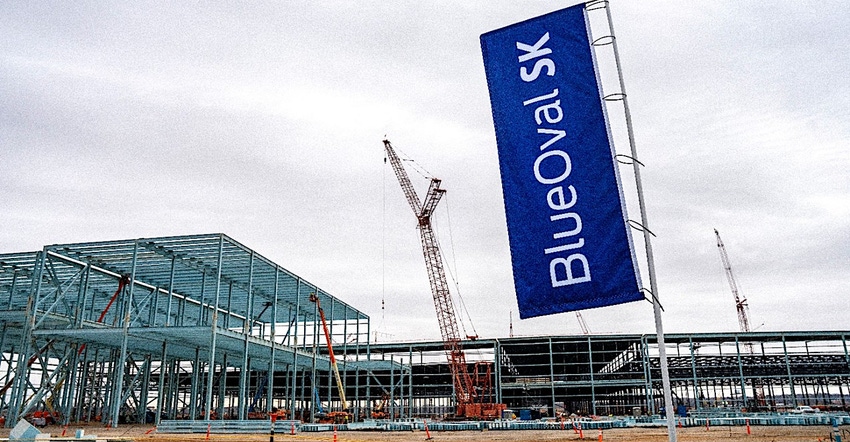MIT researcher Mario Carandente prescribes three key scenarios for relieving shortages of EV materials and components.
December 7, 2022

Automotive OEMs and Tier 1 suppliers are wrestling with supply challenges for electric vehicle (EV) components, with difficulties getting both the parts they need and the raw material required to make them.
With that challenge in mind, Design News sat down with former McLaren Automotive engineering manager and MIT Ph.D. candidate researcher Mario Carandente to quiz him on possible solutions to these problems.
What are the opportunities for EV makers to relieve supply constraints?
Mario Carandente: The exponential growth of electric vehicles is creating major disruption in the supply chain with automakers that are forced to re-think their strategies across the entire value chains. Alfred Sloan was the first with GM to move away from vertically integrated manufacturing to horizontal value chains.
With this strategy, automakers have outsourced to their suppliers many components from body systems to powertrains, and software, with the benefit of improving margins and achieving faster manufacturing scale-up.
In the context of electric vehicles, battery density, range, weight, and charging time are becoming the new performance-defining criteria of cars. Therefore, automakers must be strategic about which activities of the value chain should they do internally, and which activities should they outsource.
This is crucial for them to differentiate and build sustainable competitive advantages in the long term. We have seen over the last few years, many OEMs announcing plans to open large battery manufacturing plants following the path that Tesla has started almost a decade ago, when they signed an agreement with Panasonic to build the first Gigafactory.
However, battery manufacturing is only a piece of the puzzle. The raw materials needed for the battery chemistry require complex sourcing strategies that could be the cause of bottlenecks similar to those that OEMs are experiencing with chip shortages.
To win in the complex and competitive environment, OEMs need to deploy effective strategies to increase their ownership and control across the entire battery manufacturing value chains from raw materials to cell manufacturing and final assembly. For this reason, we will see many OEMs partnering with or acquiring battery manufacturers while creating cross-industry collaborations to be at the forefront of battery technology and innovation.
How important is cultivating new sources of raw materials, especially ones that are closer to factories and have less exposure to political risk?
Carandente: As automakers are looking to scale production of EVs, one of the biggest challenges they are facing is the supply of raw materials and whether there will be enough to meet demand by 2030. Lithium-ion batteries are likely to be the solution for the next decade and they will require a wide range of raw materials including cobalt, manganese, nickel, and graphite. Among all, cobalt represents the greatest procurement risk since it is primarily controlled by two countries: China and the Democratic Republic of Congo.
There is a need to diversify the raw materials being used in the supply chain to avoid geopolitical threats and price fluctuation as demand overtakes the supply. To overcome these constraints, automakers are looking at three scenarios:
Develop cobalt free battery chemistry
Focus on battery recycling
Drive efficiency with the smallest battery possible
On the first aspect, we are seeing many OEMs shifting from the conventional NCM (nickel, manganese, cobalt oxide) to LFP (lithium, iron phosphate). For example, nearly half of Tesla’s cars produced this year are equipped with LFP and this solution is expected to become the primary choice for high-volume mass-production EVs.
Battery recycling is another important aspect of lowering manufacturing costs by reusing raw materials to make new batteries. However, it’s unlikely that large-scale battery recycling will happen until standardization in EV lithium-ion batteries take place. Finally, as technology and infrastructure evolve, reducing the size of the battery will become the primary focus for automakers not only to build more resilient supply chains but also the drastically reduce the overall battery costs.
How much potential is there for costs to fall as these constraints are relieved? It seems like carmakers are falling short of their timetables for $100 per kilowatt-hour.
Carandente: Nowadays, battery costs account for more than one-third of a typical EV bill of materials. Depending on the size and density, the price of the battery ranges from $15,000 to $30,000. This is a huge cost if we consider that it is centralized in one component.
Therefore, in order for EVs to become affordable in the mass production markets, battery cost needs to reduce by at least by half. However, EVs also bring several advantages from a design and manufacturing perspective such as the reduced complexity in powertrain systems and body assembly.
A battery replaces more than 100 powertrain components, allowing less complex and more efficient body assembly operations. Therefore, as battery technology evolves, EVs can offer reduced engineering costs and faster vehicle design and product development cycles in comparison to internal combustion engines.
About the Author(s)
You May Also Like



